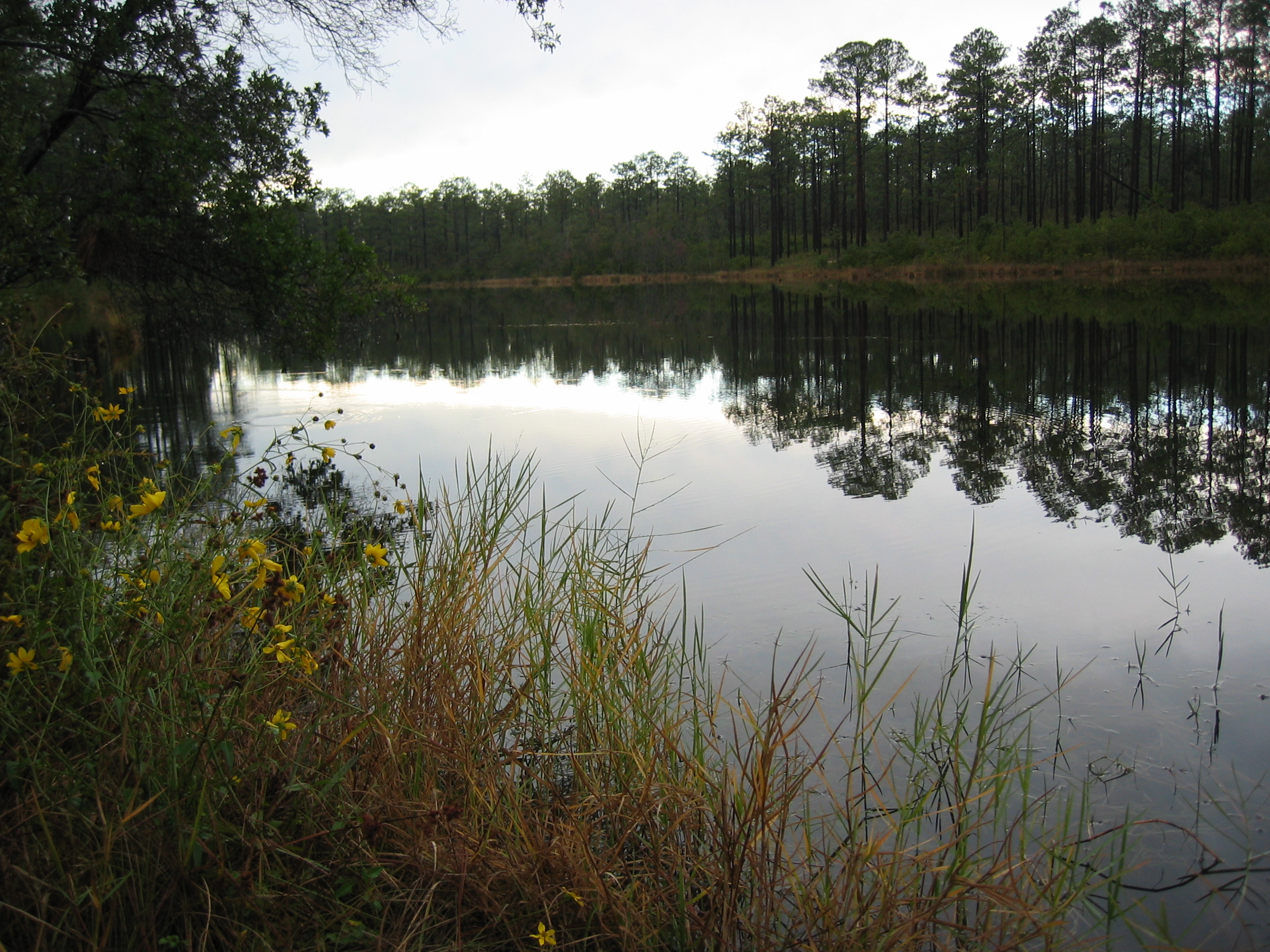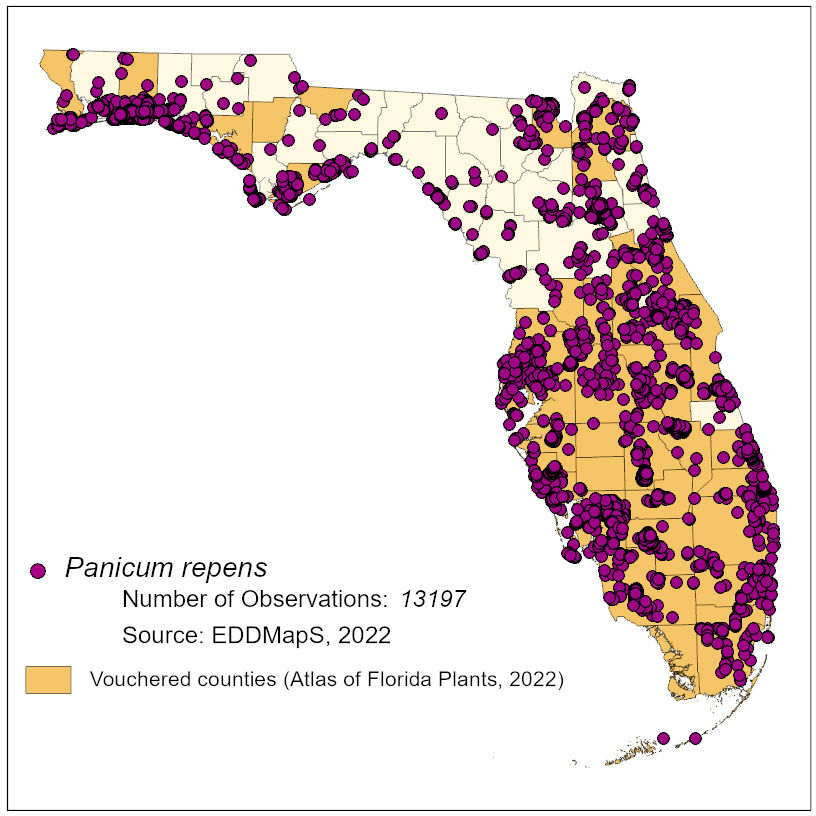Common Name: torpedo grass
Family: Poaceae
Common Synonyms: Panicum littorale, P. nitidum
USDA Hardiness Zone: 8a-11
Growth Habit: Graminoid
Origin: Africa, Asia Temperate, Asia Tropical, Europe
FISC Category: 1
FDACS Listed Noxious Weed: No
Introduction Date: pre-1876
IFAS Assessment:

.jpg)
A perennial grass that grows up to 3 m high. The stems are erect, can be glabrous or pubescent, the nodes are usually pubescent, the sheaths can be glabrous or pubescent. The leaf blades are flat and linear and grow up to 90 cm long. The inflorescence is branched.
Marshes, coastal swales, lake margins, and wet, disturbed sites.
Spread is limited to rhizome expansion or fragmentation

NA
Langeland, K.A., H.M. Cherry, C.M. McCormick, K.C. Burks. 2008. Identification and Biology of Non-Native Plants in Florida's Natural Areas-Second Edition. IFAS Publication SP 257. University of Florida, Gainesville, Florida.
http://plants.ifas.ufl.edu/plant-profiles/http://plants.ifas.ufl.edu/plant-profiles/ accessed 13 June, 2017
http://davesgarden.com accessed 13 June, 2017
IFAS. 2011. Integrated Management of Nonnative Plants in Natural Areas of Florida. http://edis.ifas.ufl.edu/pdffiles/WG/WG20900.pdf Accessed June 13 2017.